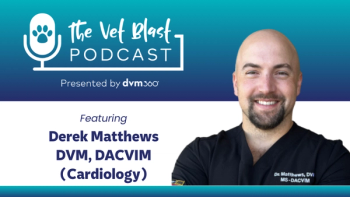
- Firstline March/April 2019
- Volume 15
- Issue 2
Finding the purrfect feline diet
Veterinarians should take inspiration from mice to identify the ideal meal for cats.
Feeding our feline friends doesn't have to be a game of cat and mouse.
When Donna Raditic, DVM, DACVN, CVA, brought three feral kittens into her life, deciding how to feed them was something of a quandary. At her session The Purrfect Diet at the
Understanding cat behavior
According to Dr. Raditic, the right diet for a cats and kittens will help them achieve optimal health, a long life, and a good quality of life. “I believe without a doubt that you can use nutrition to help improve the health of every patient you see,” she says.
The first key to mastering the feline diet lies in understanding cat behavior. Though cats are social creatures, they prefer to hunt and eat alone. “[Cats] really are control freaks,” Dr. Raditic says. They want to be the master of their own domain, with access to food, water, the litter box, their resting space. With her three kittens, Dr. Raditic separated their food bowls, giving them each independent space to eat the way they want to.
Cats are also quite picky eaters. The odor, the taste, the temperature and the texture of the food are all critical things to think about when trying to get a cat on a new diet. Because cats get habituated on certain foods and develop “neophobia,” or fear of the new, when it comes to alternatives, it might be tempting for owners to settle with one brand once they figure out which one their cat likes best. But that doesn't necessarily mean the cat is having all of its nutritional needs met.
Variety is the spice of life
Some cats like chicken-flavored cat food over fish. Some are dry food fans while others put their nose up at anything but wet food. Despite these preferences, Dr. Raditic advocates that owners fight this habituation by taking a “smorgasbord” approach.
“I offer them lots of different options in small amounts on paper plates… Why paper plates? Because no matter how much you clean, animals smell in molecules,” she describes. With her smorgasbord, Dr. Raditic wants each food to be completely isolated, and no amount of scrubbing will eradicate the smells from the previous occupant of the dish. This exercise will help open up the cat's appetite and make them more flexible to dietary changes.
Owners can also increase variety in how their cat's food is being delivered. While most owners might only feed their cats once or twice a day, Dr. Raditic says that cats should have up to 10 eating experiences every day. This can be accomplished with two or three meals of wet food, doling out small quantities of dry food between those meals. This doesn't have to be an ordeal-
“My last cat I fed twice a day, and I should have known better,” Dr. Raditic says, adding that he often kept her awake at night because he was restless and wanted to hunt. “I'm surprised he didn't say, ‘Seriously, Donna, what the heck is that? I'm a cat!'”
Nutritious as a mouse
If Tom had ever caught Jerry and made the mouse his lunch, he would have consumed around 30 calories.
In the wild, cats eat mice, and because of this, the nutritional makeup of a mouse proves to be a good model for what should be in a domestic cat's diet. A mouse is between 50 and 64 percent protein, 12 and 46 percent fat, 2 and 10 percent carbs, and has a moisture content of about 50 percent. Most pet owners are probably feeding their cat a diet with too many carbs and not nearly enough protein. Though canned diets fare a little better on the protein front than dry foods, most over-the-counter cat diets fall far short of the nutrition a mouse would provide.
To sidestep this, Dr. Raditic recommends placing cats on therapeutic diets. “Canned diabetic diets aren't perfect, but they are close to mouselike diets,” she says. Therapeutic diets also have an advantage because the nutrition information is presented more clearly, and owners can be assured that the quality of ingredients in the food is high.
“Even if an over-the-counter diet has higher protein than a therapeutic, I would still choose the therapeutic, because you don't know the quality and digestibility of that protein. The cat will probably still get more out of the protein in the therapeutic,” Dr. Raditic says.
Finding the right diet for a cat is an ongoing process for both the veterinarian and the owner. Veterinarians shouldn't be afraid to run new nutrition ideas by their clients to reach the goal of a healthier, happier and longer-lived cat.
Articles in this issue
almost 7 years ago
He ate what? Managing the garbage gut in Exam 2almost 7 years ago
A team approach to behavior medicinealmost 7 years ago
Feline-focused food puzzles dont have to be complicatedalmost 7 years ago
3 products to organize your veterinary practicealmost 7 years ago
Team meeting: Lets talk moneyalmost 7 years ago
Dig into these instant otitis tips from Instagramalmost 7 years ago
Ask Katie: My team is killing my resolutions!almost 7 years ago
Best attempts at pitching veterinary products (and some fails)almost 7 years ago
Sweet dreams: Anesthesia for the diabetic patientNewsletter
From exam room tips to practice management insights, get trusted veterinary news delivered straight to your inbox—subscribe to dvm360.





